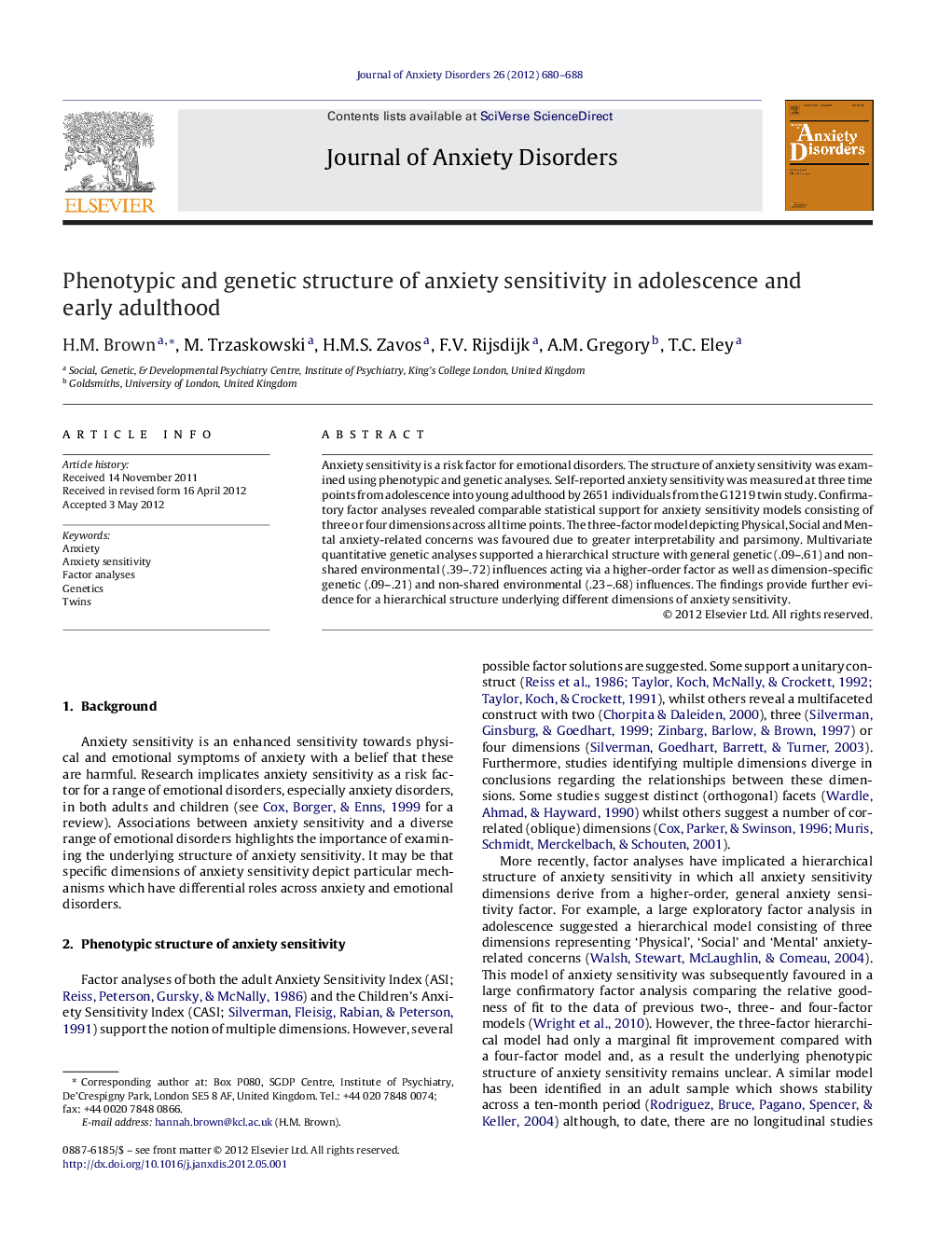| Article ID | Journal | Published Year | Pages | File Type |
|---|---|---|---|---|
| 909475 | Journal of Anxiety Disorders | 2012 | 9 Pages |
Anxiety sensitivity is a risk factor for emotional disorders. The structure of anxiety sensitivity was examined using phenotypic and genetic analyses. Self-reported anxiety sensitivity was measured at three time points from adolescence into young adulthood by 2651 individuals from the G1219 twin study. Confirmatory factor analyses revealed comparable statistical support for anxiety sensitivity models consisting of three or four dimensions across all time points. The three-factor model depicting Physical, Social and Mental anxiety-related concerns was favoured due to greater interpretability and parsimony. Multivariate quantitative genetic analyses supported a hierarchical structure with general genetic (.09–.61) and non-shared environmental (.39–.72) influences acting via a higher-order factor as well as dimension-specific genetic (.09–.21) and non-shared environmental (.23–.68) influences. The findings provide further evidence for a hierarchical structure underlying different dimensions of anxiety sensitivity.
► Whether anxiety sensitivity is a unitary of multifaceted construct is unclear. ► We examined the structure of anxiety sensitivity at three adolescent time points. ► Confirmatory factor analysis identified three anxiety sensitivity dimensions. ► Twin analyses revealed a hierarchical relationship between them. ► All dimensions had specific and shared genetic and environmental influences.
